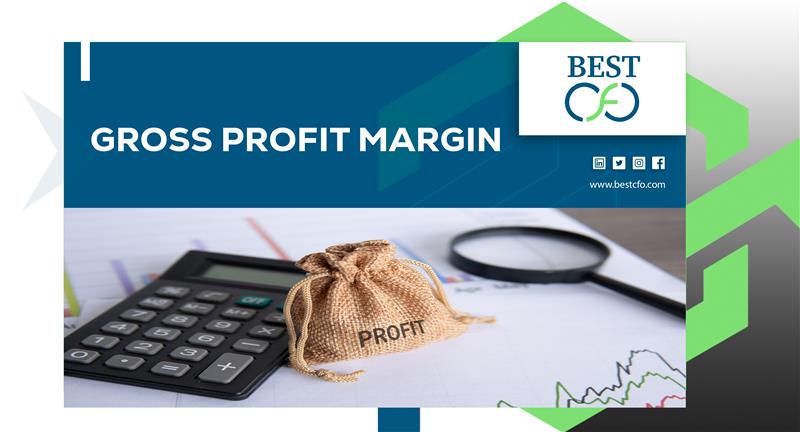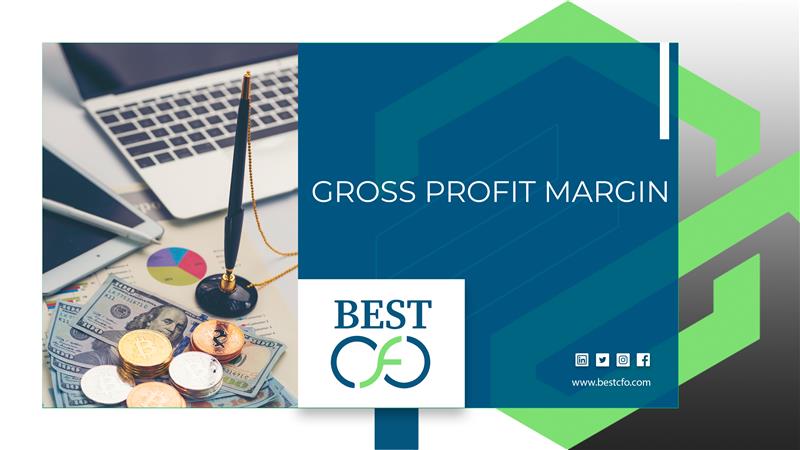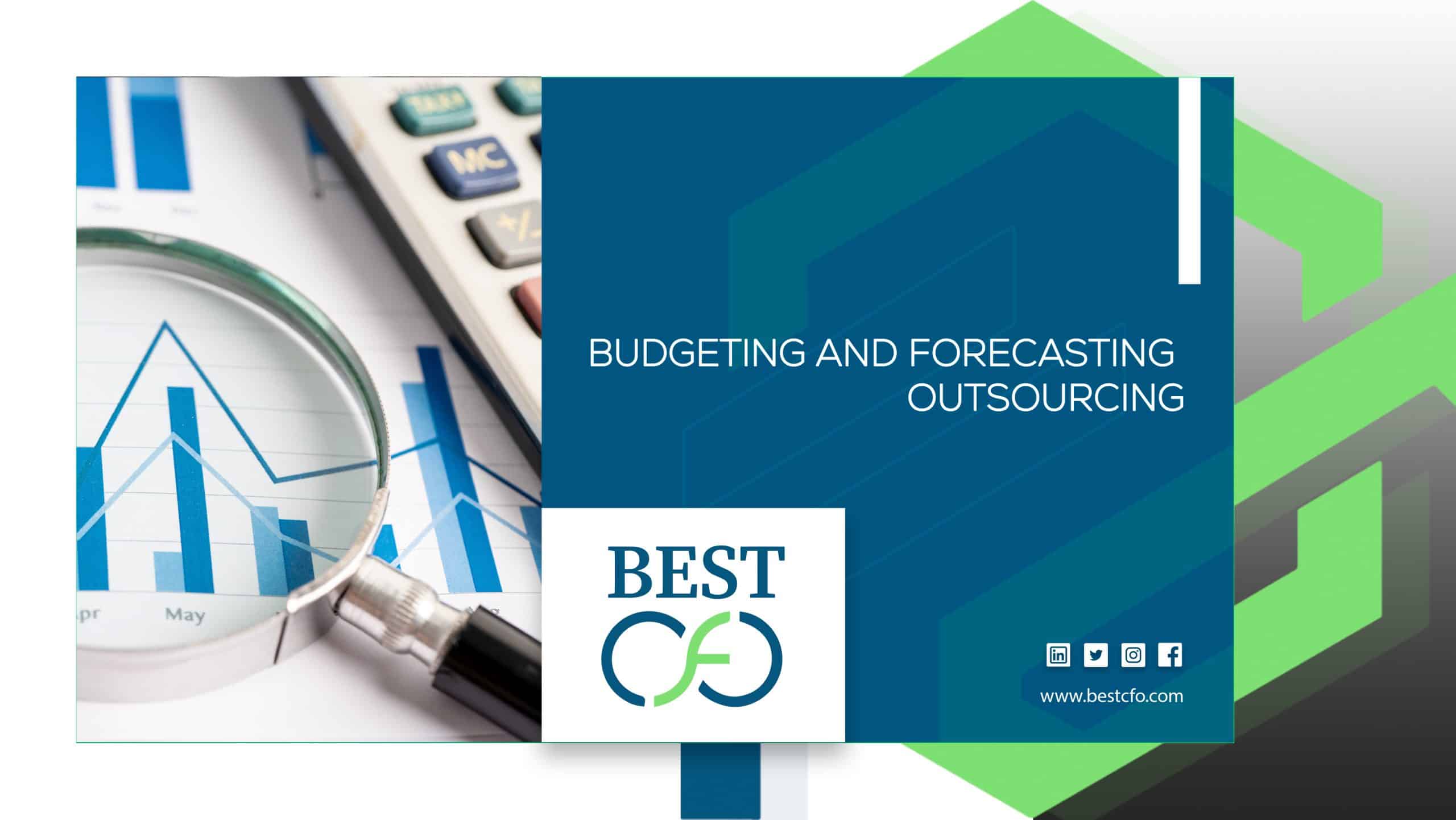
| Getting your Trinity Audio player ready... |
Gross Profit Margin Explained: What’s Ideal & How to Improve It
Gross Profit Margin (GPM) is one of the most important numbers for any business. It tells you how much money your company makes after paying for the things it sells. If you want to run a successful business, understanding your gross margin is a must. It can help you make smart decisions, attract investors, and stay ahead of competitors.
In this blog, we’ll break down what gross profit margin really means, why it matters, and how you can improve it. We’ll also share helpful examples, industry benchmarks, common mistakes, and real tools to track and boost your margin.
What Is Gross Profit Margin?
Gross Profit Margin is a percentage that shows how much of your sales income is left after covering the Cost of Goods Sold (COGS). COGS includes direct expenses like raw materials, labor, and manufacturing costs.
Gross Profit Margin Formula:
GPM = [(Revenue – COGS) / Revenue] × 100
- Revenue is the total amount of money you earn from selling goods or services.
- COGS is what you spend to produce or buy the goods you sell.
Example:
Let’s say you own a small retail store.
- You earn $50,000 in sales (Revenue).
- It costs you $30,000 to buy inventory (COGS).
GPM = [(50,000 – 30,000) / 50,000] × 100 = 40%
That means for every dollar you make, 40 cents is profit before paying other expenses like rent or salaries.
Gross Profit vs. Gross Profit Margin:
- Gross Profit is the actual dollar amount (Revenue – COGS).
- Gross Profit Margin is the percentage of that profit based on your total sales.
Why Gross Profit Margin Matters
Tracking your gross margin helps you keep your business on the right path. Here’s why it’s important:
- Shows profit before other costs: You understand how much money is made just from your core business.
- Helps with pricing: You can set better prices based on your costs and market trends.
- Improves cost control: Spot areas where you’re spending too much and make changes.
- Compare with others: Benchmark against similar businesses in your industry.
- Attracts investors: Good profit margins signal strong financial health and smart capital management.
Key Industries That Rely on GPM:
- Retail: Competitive pricing makes margin control critical.
- Manufacturing: Labor and material costs directly affect profit.
- Restaurants: High food costs can eat into margins quickly.
- Software (especially SaaS): High margins due to low production costs.
What Is a Good Gross Profit Margin?
The ideal GPM depends on your industry and business type. Here are some averages:
Industry | Average GPM |
Retail | 20%–30% |
Software (SaaS) | 70%–90% |
Manufacturing | 25%–35% |
Restaurants | 30%–40% |
Factors That Affect Your Margin
- Business model: B2B businesses may have higher GPMs than B2C models.
- Market conditions: High competition can push prices down.
- Economic trends: Inflation or supply chain issues increase costs.
To know if your margin is good, compare it to your industry average using financial statements and tools like benchmarking.
How to Calculate Gross Profit Margin
Let’s break it down step by step:
- Start with Revenue (total sales).
- Subtract COGS (costs to produce your product).
- Divide the result by Revenue.
- Multiply by 100 to get the percentage.
Example:
- Revenue: $120,000
- COGS: $60,000
GPM = [(120,000 – 60,000) / 120,000] × 100 = 50%
Common Mistakes
- Mislabeling overhead or operating expenses as COGS.
- Not tracking COGS monthly.
- Ignoring discounts and refunds.
Tools to Help:
- Accounting software: QuickBooks, Xero, NetSuite.
- Spreadsheets: Use Excel templates.
- Business analytics tools: ProfitWell, LivePlan.

Key Factors Affecting Gross Profit Margin
Here are some key factors affecting gross profit margin:
Pricing Strategy
- Underpricing leads to low profit.
- Premium pricing can raise margins but may lower sales.
- Discounting cuts into profits if not planned carefully.
Cost of Goods Sold (COGS)
- Rising supplier costs and raw material prices.
- Labor inefficiencies or poor production planning.
Sales Volume & Product Mix
- High-margin items bring better returns.
- Bundling can increase average order value.
External Factors
- Inflation, regulations, and trade laws.
- Supply chain or global economic shifts.
How to Improve Gross Profit Margin
The following are some tips to improve gross profit margin
1. Increase Revenue Without Raising Costs
- Upsell and cross-sell high-margin products.
- Use A/B testing to fine-tune pricing.
- Expand into markets with better margins.
2. Reduce COGS
- Negotiate with suppliers for better rates.
- Improve inventory and warehouse systems.
- Automate production to lower labor costs.
- Find lower-cost but reliable materials.
3. Boost Operational Efficiency
- Streamline production to cut waste.
- Use lean methods in manufacturing.
- Outsource non-core tasks if cheaper.
4. Optimize Product & Customer Mix
- Cut low-margin products.
- Focus on profitable customer groups.
- Add subscription models for steady income.
5. Use Technology & Data
- AI tools help track margins and suggest price changes.
- Dashboards for financial data analysis.
- Monitor trends with business metrics and analytics.
Common Mistakes That Hurt Gross Profit Margin
- Not raising prices with inflation.
- Ignoring rising supplier costs.
- Over-discounting products.
- Poor inventory management leading to spoilage or waste.
- Failing to track GPM regularly using performance indicators.
Case Study – Successful Gross Profit Margin Improvement
Company: A small e-commerce clothing brand.
The Problem:
- GPM was 25%, low compared to the industry average of 35%.
- High return rates and costly packaging added to COGS.
The Fix:
- Switched to lower-cost packaging.
- Added free return insurance to reduce return rates.
- Focused marketing on high-margin products.
The Result:
- GPM rose from 25% to 38% in six months.
- Monthly net income increased by 20%.
Key Takeaway: Small changes in costs and smart pricing strategies can lead to big improvements.
Tools & Software to Track & Improve GPM
Here are some handy tools to support your financial goals:
- QuickBooks, Xero, NetSuite: Manage accounting and view income statements.
- ProfitWell, LivePlan: Analyze margin trends and forecast earnings.
- Zoho Inventory, TradeGecko: Improve inventory tracking and reduce waste.
- Salesforce, Shopify, Amazon: Monitor real-time sales and pricing.
Conclusion
Your Gross Profit Margin tells a big part of your business story. It affects everything from day-to-day decisions to long-term strategy and financial management. By understanding how it works and how to improve it, you can boost profits, attract investment, and stay competitive in today’s economy.
If you want expert help analyzing your margins and building smart business strategies, consider working with the Best CFO for your company’s needs.
FAQs
1: How is Gross Profit Margin different from Net Profit?
Gross Profit Margin only looks at sales and COGS. Net profit includes all expenses like rent, payroll, and taxes.
2: Why does Gross Profit Margin vary by industry?
Different industries have different cost structures. For example, software companies don’t have much COGS, while retailers do.
3: Can a business survive with a low Gross Profit Margin?
It depends. High sales volume and low operating costs might help, but generally, a low margin is a sign you need changes.
4: How often should I check my GPM?
At least monthly. Use tools to automate reports and spot trends quickly.
5: What’s the biggest mistake when calculating GPM?
Mixing up operating costs and COGS. Only include direct product costs in GPM calculations.
Related Posts
From Finance to Future-Proofing: The Strategic CFO for IT
From Finance to Future-Proofing: The Strategic CFO for IT Suppose a traditional CFO sitting at…
CFO vs Finance Manager: Choosing The Right One For You
CFO vs Finance Manager: Choosing The Right One For You The finance world can be…
When Should You Outsource My CFO? – The Guide
When Should You Outsource My CFO? – The Guide Every business, no matter how small…
Top 5 Reasons Why You Should Outsource HR
Top 5 Reasons Why You Should Outsource HR Outsourcing is gaining popularity among businesses looking…
 Demos
Demos  Colors
Colors  Docs
Docs  Support
Support 










